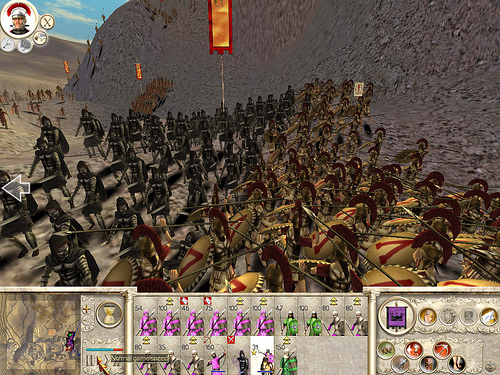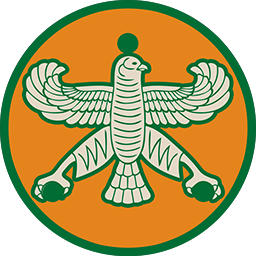Rome Total War Persia
Welcome to!A subreddit for all of those who love the Total War series. Have some Mods installed Radious AI mod, Battle mod, research mod, and unit packs 1 -3.Have the difficulty on LegendaryEvery game my ally gets war declared on them by 3 different factions baktria and the 2 factions north of them i have tried to fight them off i usually can beat the 2 north factions but every time baktria kicks my ass with how many units they can bring. Usually they attack me with 2 - 3 full Stacks while i will only have 2.My armies usually consist off 13 Horse Archers and 7 median calvary.I have also tired 4 median calvary Cataphacts general, with 11 horse archers and 4 eastern spearmen.I usually get killed off by baktria by turn 20. From the start I highly recommend cutting ties with Dahae. Until you manage to secure enough territory to take on Bactria its easier to deal with Bactria by not displaying yourself as a good target. Since Parthia has a pretty bad start the easiest thing to do is either delay Dahae being killed by Bactria (via agent use poisioning their army's) or allying with nearby factions like Aria & Arachnosia to dissuade them from declaring war on you. Although this might shift the direction where you expand campaign wise, the best way to play as Parthia is to not go to war with Seleucid/Baktria until you've secured enough space via conquering nearby eastern factions+researched T3 Noble Barracks to get decent infantry units.
I'd say yes take off the battle mod if you want horse archers to be worth anything/battles to not be a pain in the arse. However I do recommend using the campaign tweaks mod (4 TPY and a bunch of small balancing changes which help both the player and the AI.)I don't use the economy/research mod because the research is really slow,The AI mod you can use if you like to fight ridiculous odds like old-school players on TATW.I just use the unit packs and the campaign tweaks mod not the others. TATW is a medieval 2 mod which used to have a garrison script and a bunch of other scripts that hardcore players would use which would usually turn the game into a 1v3 full stacks odds against the player in almost every battle. However because of the balancing of factions and the bad AI it wasn't impossible for human players to win whole campaigns whilst playing against those odds.TPY is turns per year. Vanilla Rome is 1 turn per year.
The modded radious campaign changes this to 4 turns per year which means one year passes in 4 turns which means agents and generals live 4 times 'longer'. It doesn't make infantry worthless. If you watch the Rome 2 vids from multiplayer from good players like prince of macedon and heir of carthage, you'd notice that predominantly everybody uses a lot of infantry especially since Patch 9 when they made pikemen really really really strong. In vanilla you actually have to watch your troops, whereas when I was using the battle mod I'd leave 3 units of regular infantry to tie up nearly 10-13 units of pikemen, spearmen and swordsmen for several minutes. Its a bit ridiculous.

Contents.Wrath Of Sparta - What is it?Set in 432 BC at the outset of the Peloponnesian War, Wrath of Sparta is an entirely new campaign expansion for Total War: ROME II, will be released on the 16th December, and is the earliest period that Total War has ever attempted.As the legendary warriors of Sparta are called into open conflict against an arrogant Athens by scheming Korinthos and Boiotia, Wrath of Sparta challenges you to dominate the Hellenic world. However, while the City States vie for control of their homelands, across the Aegean sea the vengeful Persian Empire watches its old foe closelyAcross a bespoke campaign map focussing on a highly-detailed ancient Greece, the Greek Islands and the Ionian Coast, this campaign pack features all new tech-trees, battlefield and naval units, great wonders and famous Greek heroes. These were the words of the Athenian general Hippocrates to his men before the Battle of Dileum against the Boiotian League. Led by the Thebans, The league was a confederation of city states on the Greek mainland north of Attica.Ironically it was the very cavalry that Hippocrates wanted to crush which brought about his defeat, in what was to be his last battle.

The Theban General Pagondas had deployed his troops in an asymmetric line with heavy emphasis on his right flank where the Thebans faced off the Athenian forces. Pagondas’ hoplites were formed 25 rows deep as opposed to the usual eight. However, despite the advantage in numbers, the disciplined Athenian front line was holding.Meanwhile on Pagondas’ weaker left flank, the rest of the Boiotian allies were outmatched. But as the battle teetered on a knife-edge, the Theban general played his ace. He sent part of his cavalry around the hill behind the Boiotian army to support his left flank. When they seemingly appeared from nowhere and charged downhill to strike the enemy, the Athenian right was shocked into disarray and swiftly routed.The Theban Hippeis had effectively won the battle.
Unsurprisingly, it was Thebes which produced one of the first great Greek cavalry commanders in Pelopidas a few decades later, whose expertise inspired Phillip II and Alexander the Great himself. In the aftermath of the Graeco-Persian War at the beginning of the 5th century BC, Athens managed to further consolidate its role as a regional power and usher in the era of the Athenian Empire. A main pillar of their power was their naval supremacy which had played such a vital role for the Greek efforts against the Persian forces in the epic Battle of Salamis.The pinnacle of naval engineering at the time, the Trires were the backbone of the Athenian Navy. These fast and highly manoeuvrable galleys were propelled by three rows of oars on each side of the ship, typically manned by Athenian citizens. The Athenians were experts at outmanoeuvring enemy ships so as to ram their sides or more vulnerable rears and used various tactics to attack their foes or defend against them.While ramming in an effort to sink ships was the preferred course of action, the oarsmen had to rely on the deck crew to defend them in case they were boarded.
Disciplined armoured Marines may have slowed the ship down due the added weight, but they were a formidable defence against enemy marauders, and sometimes a last hope for survival. The Greek answer to the increasing scale and organisation of warfare throughout the 1st millenium BC was the Hoplite.
Citizen warriors, they were trained at the expense of the state, though like the Republican Romans, hoplites provided and cared for their own weapons and armour. Good armour and weapons were expensive, so the majority of hoplites were drawn from the middle classes of Greek society.While styles changed over time and richer citizens had access to more decorative and protective brass armour pieces, the typical hoplite was clad in in linothorax and helmet, and carried a spear in his right hand and a hoplon shield in his left.
Rome Total War Mods
This offered him and the man to his left protection, creating a defensive wall in the closed ranks of the phalanx. Hoplites also carried a short sword, which might be adopted in the crush of extended melee.The finest veteran hoplites were chosen from the ranks and formed units of their own, to be deployed where they might swing the tide of battle. To be a Picked Hoplite was a great honour that came with a great responsibility: to succeed in battle where others would fail.
When the Persian King of Kings Xerxes I invaded Greece, it was the Spartan King Leonides and 300 of his royal guard who led the Greek defenders against an army that vastly outnumbered them. The Greeks held off the Persian advance for three days in the pass of Thermopylae in 480 BC. On the last day the Spartans remained alongside their Theban and Thespian brothers in arms while the rest of the Greek army retreated. They fought to the last man but were ultimately overwhelmed. Yet soon after, Xerxes lost a vast portion of his navy in the battle of Salamis, and was forced to return home. The military significance of Thermopylae is debateable, but the moral effect to the Greek effort cannot be underestimated.The Spartans weren’t famous for their sacrifice at Thermopylae alone.
Rome Total War Sparta Vs Persia
They were known as fierce warriors across and beyond Hellas, and the Spartan Army was arguably the toughest and most disciplined any Greek Polis could muster at the time. At age seven, a Spartan would enter the agōgē, a mandatory education and training regimen. A large part of his education was comprised of physical and military exercise and any male who wasn't able to successfully pass through the agōgē was denied citizenship.Thus the Spartans insured that their Hoplite Phalanx was comprised of exceptional warriors, the very best of which were the Royal Spartans.